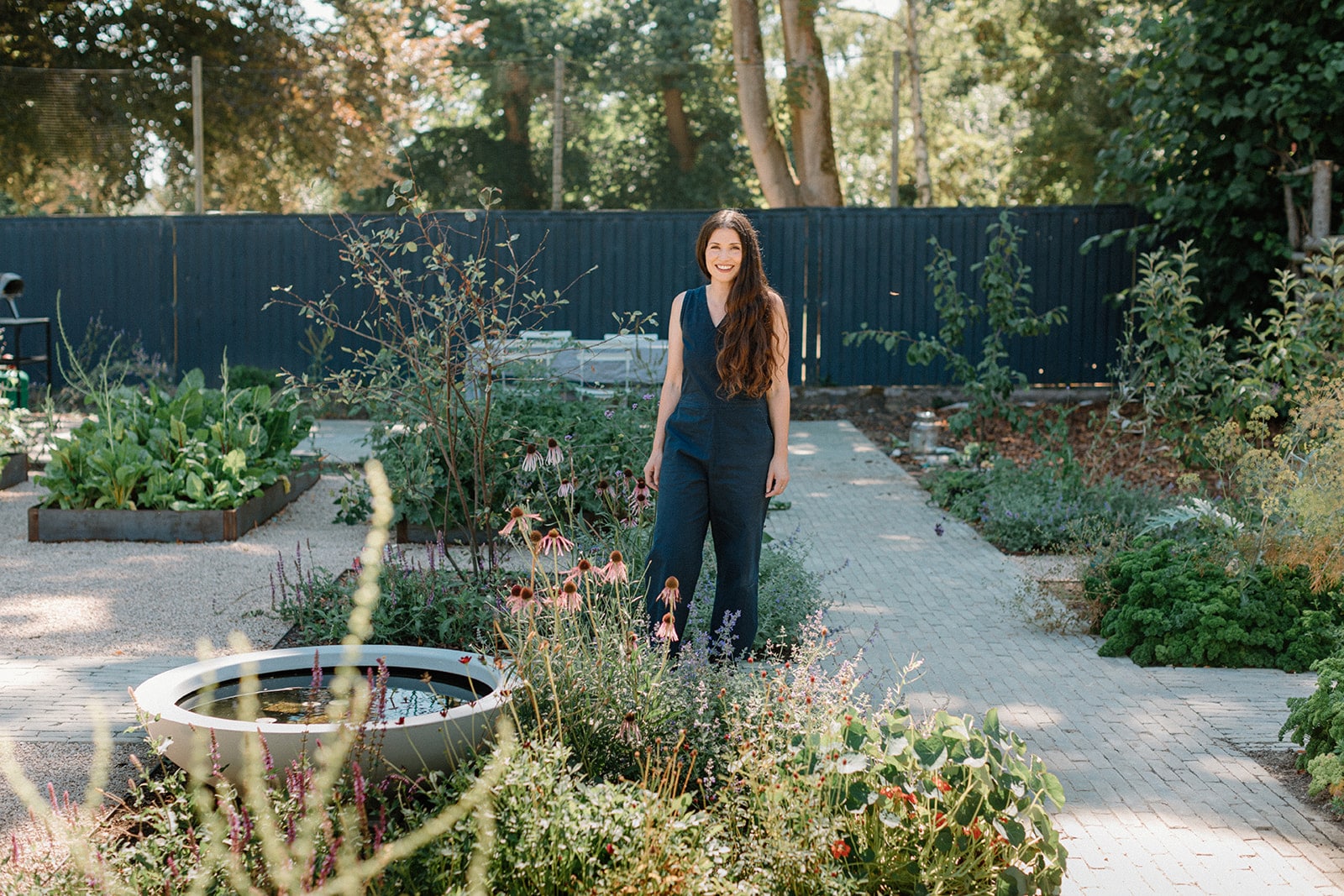Following her triumphant time at Chelsea Flower show earlier this summer, local designer Camellia Taylor, who won an RHS Silver Gilt medal for her Natural Affinity Garden for Aspens, speaks to Eileen Leahy about her career and why she swapped psychology for horticulture…
Aspens charity and local garden designer Camellia Taylor celebrated an award-winning Chelsea Flower Show in May.
The Pembury-based organisation, which provides high-quality care and support to individuals on the autism spectrum and those with learning disabilities, worked with local garden designer Camellia to create the Natural Affinity Garden, which went on display at the RHS’s most famous horticultural event and drew lots of praise.
Sponsored by Project Giving Back in the All About Plants category, the garden’s main aim was to raise awareness around the therapeutic value of nature by engaging with each of our seven senses. Here Camellia tells SO readers more about the project and reveals why she digs gardening so much…
What made you decide to quit your job in psychology to pursue a career in gardening?
I have loved being outside since I can remember. My earliest memories always involved the outdoors so my interest in gardening stemmed from that passion. My first experience in gardening was when I moved to my first flat where I had a window box of basil that I somehow didn’t kill from which I continually harvested. I left my career in psychology when I had my first daughter. The pause in my career gave me time to re-evaluate my priorities and pursue a career in something I was equally passionate about.
Where did you do your training and what did you enjoy most about it?
I did my training at London College of Garden Design at Kew Gardens. It was the most incredible year. We had amazing lecturers and guest tutors and it was an experience I’ll never forget. I loved being in an environment with people that were equally passionate about garden design and made so many great friends.
Do you think there are any key similarities between your two careers?
I am passionate about the benefits we derive from nature. I enjoy linking people with their outdoor spaces and creating a connection that is personal to them. I inform my design choices with evolutions in scientific research in the area and recently completed eco-sensory training to complement my field of work.
You graduated in 2020 and three years later were showing at Chelsea! How did this happen?
The journey to Chelsea evolved from my connection to Aspens. It is a wonderful charity that I have known for years. We have a lovely relationship. We (together with 11 other chosen designers/charities) were lucky enough to receive the generous sponsorship from Project Giving Back this year at Chelsea which made my design possible.
What was it like being part of the world’s biggest horticultural event?
It still feels surreal and was such a great opportunity to showcase the amazing work Aspens do. I loved being part of it and getting to work alongside some of the best designers in the world.
Can you tell us about the thinking behind the Aspens garden?
The footprint of the garden is based on my interest that brain neurons and plant roots not only look similar, but have also been mathematically shown to grow in the same way. The garden is composed of three main elements: trees, plants and stone. The plants have been specifically selected for their individual sensory qualities and are placed according to different sensory zones.
Have there been challenges involved in your career as a garden designer?
I’m a working mum and it is a constant challenge trying to juggle parenting with my career, but one I wouldn’t change. My daughters are enthusiastic about the job I do. They are creative girls and often show me their own designs and I love to encourage their creativity.
Can you tell us about any other commissions you have worked on recently?
I mainly work on residential designs. Recently I’ve been creating gardens for young families which is something I really relate to as the brief frequently involves incorporating natural play. I love to do this as it ties back to child development from my previous career in psychology.
You cite a love for naturalistic planting. Has this always been your signature style?
I love naturalistic planting as it sits effortlessly in the garden. My style has evolved over the years and will continue to do so. I follow Beth Chatto’s principles of ‘right plant, right place’ so always try to use planting that is appropriate and sympathetic to their environment. I will always be passionate about the environment and hope that my designs reflect this.
Which gardens or designers inspire you and do you have a favourite local one?
My favourite designer is Dan Pearson. I have always admired his work and have been fortunate to hear him speak. He reimagined Delos at Sissinghurst, which is one of my favourite local gardens to visit. Jo Thompson is a great local designer and is someone who always takes time to give me the benefit of her experience and knowledge.
What new trends are you seeing in gardening?
The UK and Southern Europe are currently experiencing some of the hottest weather on record (which follows a wet winter in the UK) and a number of my recent clients have expressed an interest in incorporating more drought-tolerant planting and environmentally friendly landscaping into their design.
Are you looking forward to a busy year in 2024?
I am excited about developing my thinking and designs to adapt to this climate unpredictability and ensure that I’m always prioritising the environmental impact of my designs – with a similar focus to the plants and local materials incorporated in my Chelsea design. As always, it will be another hugely busy but rewarding year, and I’ll hopefully continue to learn and grow as a designer.








